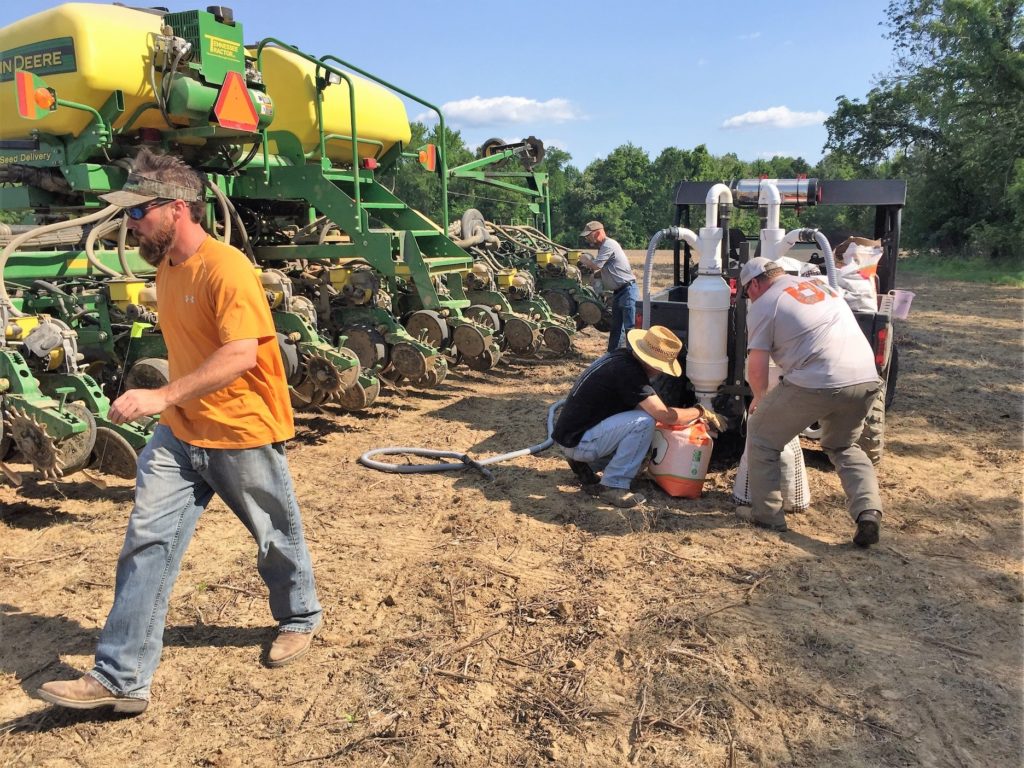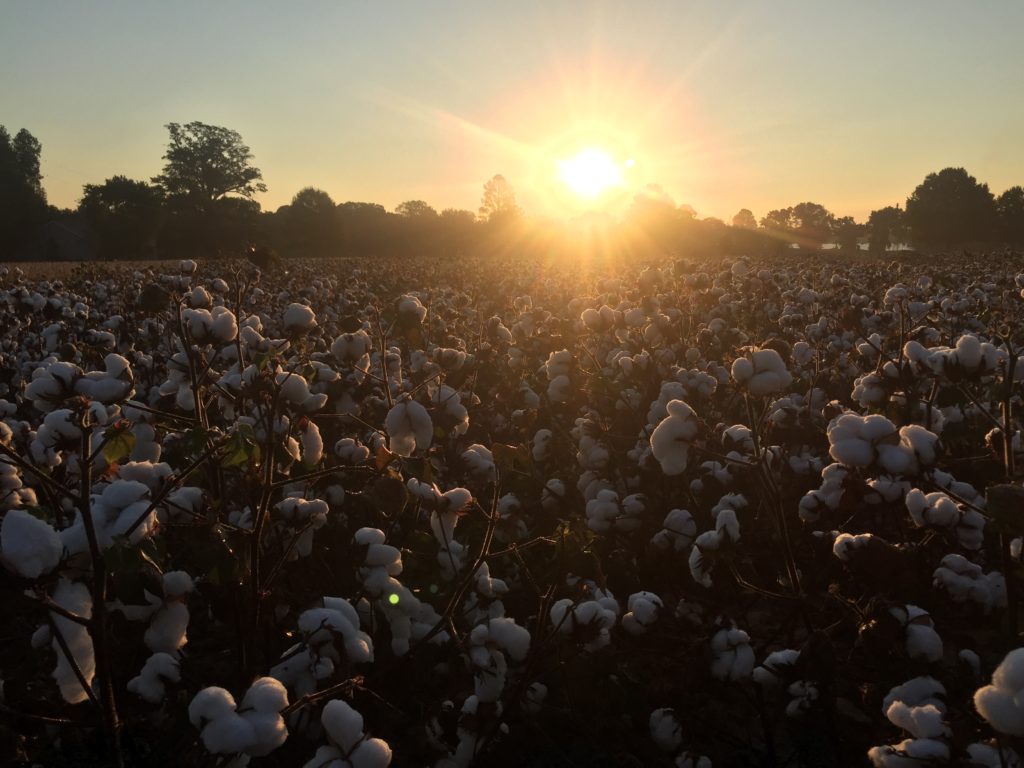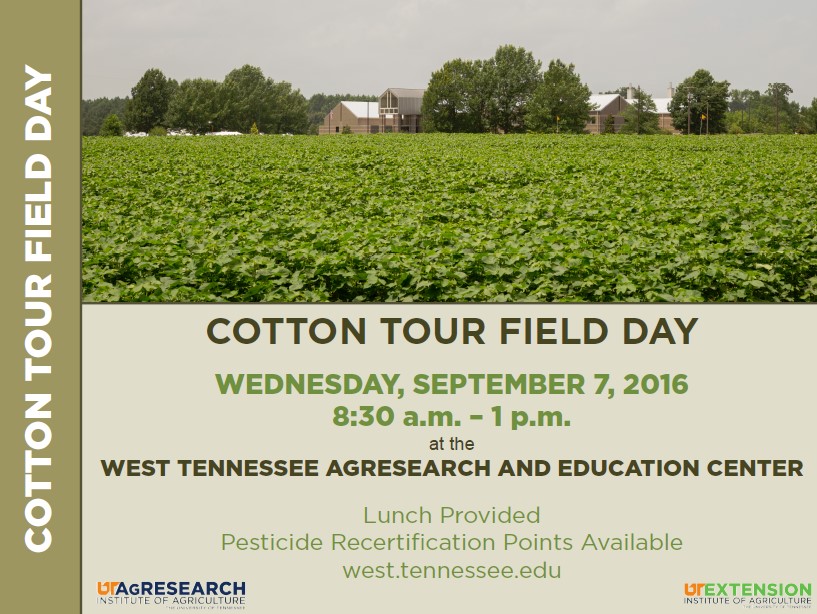The crazy warm and mostly dry February has many folks thinking about planting March corn. If this is the case on your farm, it is time to be applying burndown. This is particularly true for fields infested with ryegrass. Continue reading
Category Archives: Weeds
Using the Correct Nozzles Correctly 2
The fourth blog on stewardship of XtendiMax and Engenia on Xtend crops will revisit nozzles. Dr. Bob Wolf, a leading expert on nozzles, wrote me after he read my last blog and stated that his research would suggest that the ideal pressure range to run TTI11004 nozzles on is between 45 and 60 PSI. I had suggested 30 to 60 psi. Continue reading
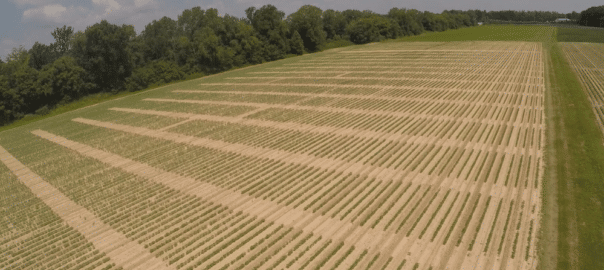
2016 Cotton Variety Trial Results
Ryan Blair, County Variety Testing Coordinator
The 2016 TN Cotton Variety Trial Results Publication (PB1742) is now available online. This document contains detailed results from all harvested trails in the 2016 University of Tennessee Cotton Variety Testing Program. Continue reading
Tennessee Grain & Soybean Producers Conference
The 2017 Tennessee Grain & Soybean Producers Conference is being held at the Dyer County Fairgrounds in Dyersburg, TN on Thursday, February 2nd. On-site registration begins at 7:45. The programs ends after lunch following the Keynote Address by Harrison M. Pittman, Director, National Agricultural Law Center (University of Arkansas System Division of Agriculture) on “Ag Law Update: Recent & Emerging Issues for the Ag Industry”. Preliminary Agenda (updated)
Preliminary UT Cotton Variety Strip Trial Data Now Available
By Tyson Raper and Ryan Blair
The University of Tennessee Cotton Agronomy Program provides an unbiased evaluation of experimental and commercial varieties available for production in Tennessee each year. The 2016 program consisted of Continue reading
Wrapping up harvest aid applications in 2016
We have been blessed with another great harvest season and it appears we may be able to finish harvest with little rain. Here on the 5th day of Oct, I would guess the average cotton acre within the state has already received the first application of harvest aids and is very close to seeing a picker. Even so, several acres have not been defoliated. This has led many to call with concerns about the cooler temperatures in the forecast over the weekend and several have asked if it is simply time to defoliate based on calendar date. Continue reading
Red leaves in cotton: Causes and implications
Tyson Raper, Heather Kelly and Frank Yin
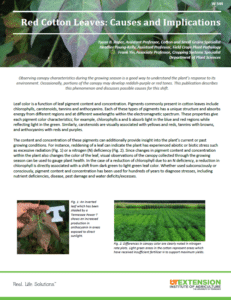
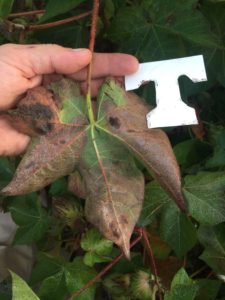 Observing canopy characteristics during the growing season is a good way to understand the plant’s response to its environment. Occasionally, portions of the canopy may develop reddish-purple or red tones. The synthesis of anthocyanin, the pigment which typically causes the reddening, is commonly increased after leaves are exposed to light following multiple abiotic and biotic stresses. Continue reading
Observing canopy characteristics during the growing season is a good way to understand the plant’s response to its environment. Occasionally, portions of the canopy may develop reddish-purple or red tones. The synthesis of anthocyanin, the pigment which typically causes the reddening, is commonly increased after leaves are exposed to light following multiple abiotic and biotic stresses. Continue reading


